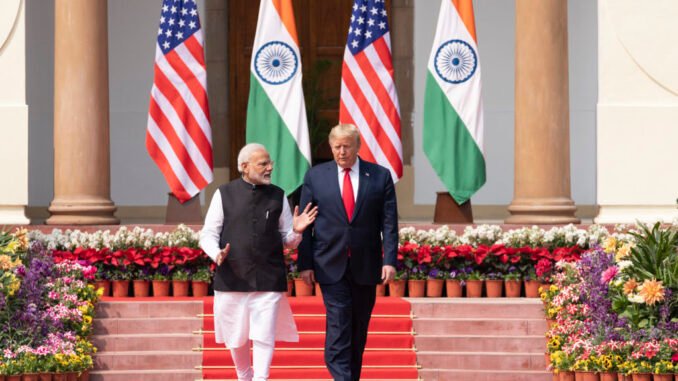
In a significant relief for Indian exporters, the United States has extended the suspension of its proposed 26% reciprocal tariffs on Indian goods until August 1, 2025. Announced on July 7, 2025, by the White House, this decision gives India and the US more time to negotiate a trade deal, easing pressure on Indian businesses and boosting hopes for stronger trade ties.
What Are These Tariffs?
On April 2, 2025, US President Donald Trump announced a 26% tariff on Indian imports as part of his “Liberation Day” trade policy to reduce the US trade deficit and promote American manufacturing. These tariffs, which would increase the cost of Indian goods like textiles, jewelry, and steel in the US market, were paused for 90 days to allow negotiations, with a deadline of July 9, 2025. The recent extension moves this deadline to August 1, giving both countries an extra three weeks to finalize an interim trade agreement.

Why This Matters for India
The US is India’s largest trading partner, with bilateral trade in goods reaching USD 131.84 billion in 2024-25, including USD 86.51 billion in Indian exports. The tariffs, if imposed, could make Indian products like apparel, gems, and leather goods more expensive in the US, hurting exporters and small businesses. The suspension provides temporary relief, allowing exporters to continue business without added costs and giving negotiators time to secure better terms.
Indian exporters have welcomed the move but remain cautious. “This gives us 12-13 more working days to push for a fair deal,” said an exporter. Trade expert Biswajit Dhar called it a “positive sign,” noting India’s strong negotiating stance. However, Mumbai-based exporter Sharad Kumar Saraf warned, “The suspension is short. We must explore new markets to reduce risks.”
What’s Happening in the Trade Talks?
India and the US are working on a bilateral trade agreement (BTA), aiming to finalize the first phase by September-October 2025. An interim deal is also in progress to address immediate concerns like market access. India is pushing for lower US tariffs on its labor-intensive exports, while the US seeks greater access for its industrial goods, automobiles, and agricultural products like apples. A key sticking point is India’s reluctance to allow genetically modified (GM) agricultural imports, which could affect its exports to markets like the European Union.

India was notably excluded from a list of 14 countries, including Japan, South Korea, and Bangladesh, that received tariff notices from the US on July 7, signaling progress in talks. The White House cited “ongoing discussions” as the reason for the extension, showing willingness to engage with India constructively.
What’s Next?
While the extension is a breather, the short timeline means both sides must act quickly. Indian officials have clearly stated their position, and the next move depends on Washington. Exporters are hopeful but urged to diversify markets to reduce dependence on the US, given the unpredictability of US trade policies.
The Federation of Indian Export Organisations (FIEO) emphasized that a finalized BTA could give India a competitive edge over countries facing tariffs. “We’re keeping our fingers crossed,” said FIEO President. Posts on X reflect optimism, with users calling it a “crucial window” for India-US trade negotiations.
Conclusion
The US’s decision to extend the tariff suspension until August 1, 2025, is a welcome relief for Indian exporters and a chance to strengthen trade ties. However, the short extension underscores the need for swift negotiations and market diversification. As India and the US work toward a fair trade deal, this move keeps the door open for a win-win partnership, benefiting businesses and consumers on both sides.
Last Updated on: Tuesday, July 8, 2025 8:49 pm by Sri Hari Priya Rayaprolu | Published by: Sri Hari Priya Rayaprolu on Tuesday, July 8, 2025 8:49 pm | News Categories: News, India, Latest, Trending

Leave a Reply